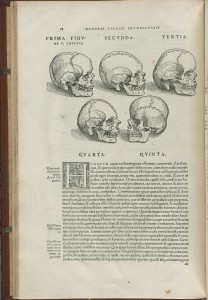Italyʼs medieval universities established the study of human anatomy for medical professionals. To heighten their art, the Renaissance masters clandestinely studied anatomy through human dissection. Connecting Art and Anatomy is better understood through reading the academic underpinnings of Anatomia Italiana.
Below is a selected bibliography of downloadable journal articles and book chapters in PDF that provide context for Anatomia Italiana.

Below is a reference list of scholarly books that examine the connection between art and anatomy.
- Carlino, A. Books of the Body: Anatomical Ritual and Renaissance Learning, University of Chicago Press, 1999.
- Cunningham, A. The Anatomical Renaissance: The Resurrection of the Anatomical Projects of the Ancients, Scolar Press, 1997.
- Klestinec, C. Theaters of Anatomy: Students, Teachers, and Traditions of Dissection in Renaissance Venice, Johns Hopkins University Press, 2011.
- O’Malley, C. and Saunders, J. Leonardo da Vinci: Leonardo on the Human Body. Dover, 1983.
- Park, K. Secrets Of Women: Gender, Generation, and the Origins of Human Dissection, Zone Books, 2006.
- Rifkin, B. and Ackerman, M. Human Anatomy: From the Renaissance to the Digital Age, Abrams Publishers, 2006.
- Riva, A (editor). Flesh and Wax: The Clemente Susini Anatomical Models in the University of Cagliari, Ilisso, 2007.
- Saunders, J. and O’Malley, C. The Anatomical Drawings of Andreas Vesalius, Bonanza Books, 1982.
- Sawday, J. The Body Embalzoned: Dissection and the Human Body in Renaissance Culture, Routledge, 1995.
- Stone, I. The Agony and The Ecstasy: A Biographical Novel of Michelangelo, New American Library, 1961.
- Von During, M., Poggesi, M. and Didi-Huberman, G. Encyclopaedia Anatomica: Museo La Specola Florence, Taschen, 1999.
- Wallace, W. Michelangelo: The Artist, the Man, and His Times, Cambridge University Press, 2010.
